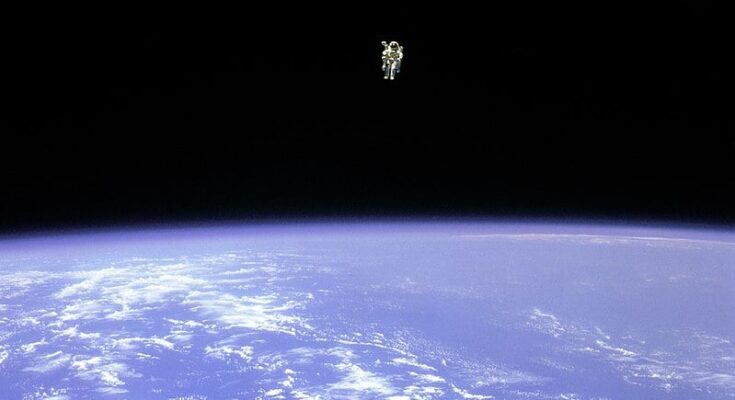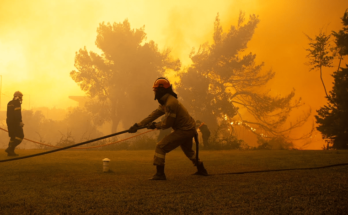Astronauts who return from missions in outer space speak of a strong, strange space smell that clings to their suits and is hard to describe.
According to NASA, when astronaut Greg Chamitoff returned from a spacewalk, he said that “there’s one smell up here that’s really unique though…we just call it the smell of space. There’s this really, really strong metallic smell and I don’t know exactly what it is.”
Astronauts cannot smell it when they walk on space because they smell the plastic of their suits. But when they are back to the space station and take off their helmets, they feel it in their nostrils, as it stays on their spacesuits and tools.
To unravel the mysteries of space is probably work that could take generations upon generations of astronauts. Such is the origin of the peculiar smell of space.
There have been several descriptions of the unique odor inside space stations after the completion of missions. Some say it smells like gunpowder, and others say space smells like ozone. One astronaut described it as “sweet-smelling welding fumes,” seared steak, or metal.
Astronaut Alexander Gerst wrote on Twitter: “To me, space smells like a mixture between walnuts and the brake pads of my motorbike.” Well said, if we knew what the brake pads of his motorbike smell like.
NASA goes to fragrant makers
The smell of space is so distinct that NASA went to the experts to identify it and re-create it in the lab for their training simulations. They asked Steven Pearce of the fragrance maker Omega Ingredients to re-create the odor for its training simulations, as the company had recently replicated the smell of the moon. Pearce said that astronauts compared it to spent gunpowder.
Astronaut Don Pettit added to the metallic description of the outer space smell of others: “The best description I can come up with is metallic; a rather pleasant sweet metallic sensation…It reminded me of pleasant sweet-smelling welding fumes. That is the smell of space.”
Dr. Louis Allamandola, former director of the NASA Ames Astrophysics and Astrochemistry Laboratory, says that polycyclic aromatic hydrocarbons are likely contributors to the particular smell of space. Polycyclic aromatic hydrocarbons are exceptionally sturdy, chicken wire-shaped molecules that are common throughout the universe. They are also present on Earth in things such as soot, car exhaust, burnt toast, and charred meat.
Explanation of strange outer space smell
Allamandola initially explains that space is an ultra high-vacuum, and man could not survive long enough to smell anything.
He then explains that, in outer space, there are two regions, the first being “the deep interstellar space between the stars that you see outside the dark lanes and blobs in the Milky Way on a clear and dark night.” Stars contain light elements like hydrogen and helium that feed their nuclear reactions as well as heavier elements like carbon and nitrogen. When light elements are exhausted, the stars die and carbon and oxygen are formed and ejected.
Some stars produce much more carbon than oxygen and form soot. Others produce much more oxygen than carbon and form silicates, which is what sand and rock are made of. The chemistry in these circumstellar shells is very similar to the combustion of fossil fuels. “Just like a running car, if you starve it of oxygen you’ll start to see black soot from the exhaust and get a foul smell. Think about the black clouds coming out of trucks and buses using diesel fuels as they start from a stop. Also, think of burnt hamburgers and toast at BBQs and from recalcitrant toasters.”
The key ingredients of soots are polycyclic aromatic hydrocarbons (PAHs), very complex molecules by interstellar standards. “Since our noses are particularly sensitive to small PAHs, this is what you’d smell if you could inhale several hundred cubic miles of ‘space,’” Allamandola explains. These PAHs are exceptionally stable and survive the harsh interstellar radiation fields and shock waves. They float around for a very long time, emitting the particular space smell.
Blobs in the Milky Way and strange outer space smells
“The second region is inside those dark lanes and blobs in the Milky Way. Eventually, enough of the soot and other dusty materials stars form at the end of their life collect in vast regions, forming the dark lanes and blobs which are called interstellar dust clouds,” Allamandola says.
The dust clouds block the light and the dust grains get very cold. The atoms and molecules in the gases freeze onto the grains, forming new molecules. “Even though they are so cold some chemistry happens, but in regions of the cloud where new stars and planets are forming, the UV is strong enough to drive chemistry in these very cold ices,” he explains.
These ices are comprised mainly of water, alcohol, ammonia, and carbon dioxide, with lesser amounts of carbon monoxide, PAHs, formaldehyde, and even lesser amounts of molecules of great astrobiological interest. Inside dark clouds, “the space would smell a bit like a crazy ice cream shop with the crisp touch of water ice dominated by a breathtaking, knee-buckling ammonia whiff; in some cases with an additional morgue-like accent due to the formaldehyde,” Allamandola graphically explains.
Space smells of rotten eggs?
Scott Sandford, Senior Research Scientist in the Ames Science Directorate, offered his own version of what outer space smells like:
“[Jupiter’s moon] Io is an environment that would likely have its own unique smell (I’m guessing strong overtones of rotten eggs),” he said.
In many cases, what the space station astronauts smell is likely the result of a sort of combustion. The space station is at a low enough altitude that it is still plowing through a faint atmosphere containing oxygen. The station creates a halo of excited oxygen around the station, and this results in oxidation of materials, particularly those facing the ram direction of the station.
Undoubtedly, the same process affects astronauts’ suits. This is probably another example of a form of “combustion.”
Overall, the smells of space are many and varied. Deep space may have aromas like a charcoal grill, but once you get into dark clouds where stars and planets form, the smells might be even more mysterious. Odors might range from sweet sugar and rum to the sulfur stench of rotten eggs, and they float around for millions of years appearing in comets, meteors, and space dust.
These hydrocarbons have even been shortlisted for the basis of the earliest forms of life on Earth. It is no surprise that polycyclic aromatic hydrocarbons can be found in coal, oil, and even food.
Amazingly, scientists found that the dust cloud at the center of the Milky Way contains large amounts of ethyl formate. This is the compound that, on Earth, gives raspberries their flavor, believe it or not. What’s more, ethyl formate itself is created from a reaction between an acid and a type of alcohol. This leads to a rum-like smell.



